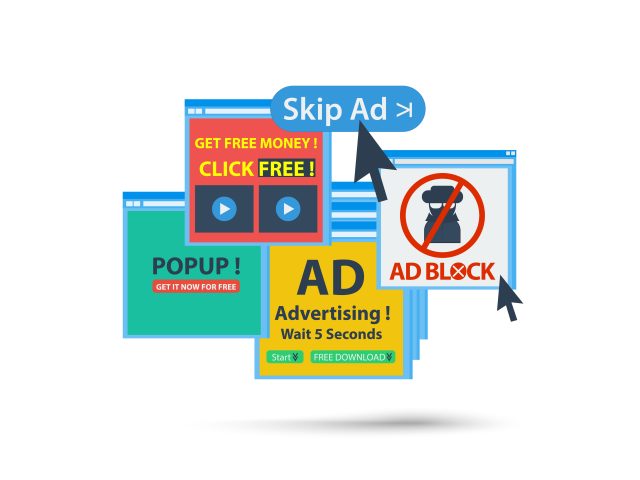Auto Loan Affordability: How To Calculate What You Can Afford
ShareBuying a car is an exciting milestone, whether you’re a first-time buyer, a family looking for a reliable vehicle, or a retiree finally buying the ride of your dreams. Regardless of what you’re looking for in your purchase, it’s also a significant financial commitment that requires careful planning.
That’s why understanding what you can afford is an important first step. That way, you can feel confident that you’re making a smart choice that fits both your budget and lifestyle. At Member One, we’re here to help you navigate this process.
In this guide, we’ll walk you through how to calculate what you can afford when you take out an auto loan, using our interactive tool. We’ll also cover key factors like budgeting, loan terms, interest rates, and down payments—everything you need to know to drive away stress-free.

How to Use Our Auto Loan Affordability Calculator
One of the easiest ways to determine what you can afford is by using an auto loan affordability calculator. Our tool simplifies the process, giving you a clear picture of your car-buying budget based on your financial situation.
Here’s a step-by-step guide to using it:
Gather Your Financial Info: Before you start, have a rough idea of your monthly income (after taxes), current expenses (like rent, utilities, and other debts), and any down payment you’re planning to make.
Input Your Details: Enter your monthly income, expenses, and existing debt payments into the calculator. Then add your desired loan term, estimated interest rate, and down payment amount.
Review the Results: The calculator will estimate your maximum loan amount, monthly payment, and total loan cost. It’s a quick way to see how different inputs—like a larger down payment or shorter loan term—affect affordability.
Adjust as Needed: Play around with the numbers. For example, increasing your down payment or shortening the loan term can lower your monthly payment and overall interest.
The Member One calculator tool is perfect for first-time buyers who may not know where to start, families balancing multiple expenses, or financially savvy individuals looking to upgrade their ride. It’s your first step toward a car purchase that won’t stretch your finances too thin.
Budgeting for an Auto Loan: Setting Yourself Up for Success
Before you even step onto a dealership lot, setting a realistic car-buying budget is essential. A car isn’t just about the sticker price—it’s about what you can comfortably pay each month while still covering your other needs.
Here are some budgeting tips to keep in mind:
Follow the 10-15% Rule: Experts suggest keeping all car-related expenses—loan payments, insurance, gas, and maintenance—between 10-15% of your monthly take-home pay. For example, if you bring home $4,000 a month, aim for total car costs of $400-$600.
Understand Your Debt-to-Income Ratio (DTI): Lenders often look at your DTI, which is your total monthly debt payments divided by your gross monthly income. Aim to keep this below 36%. If you earn $5,000 before taxes and your debts (including the car payment) total $1,800, your DTI is 36%—right at the limit.
Try the 20/4/10 Rule: This guideline recommends putting 20% down, choosing a loan term of 4 years or less, and keeping total car expenses at 10% or less of your monthly income. For a $30,000 car, that’s a $6,000 down payment and about $500 a month with a good interest rate.
Choose your Lender Wisely: Opting for a lender like a credit union can often secure you a better interest rate compared to dealership financing. Explore affordable options with an auto loan from Member One to help save money over the life of your loan.
Track Your Spending: Use a budgeting app or spreadsheet to see where your money goes each month. This can help you spot areas to cut back and save for your car.
Boost Your Credit: A higher credit score can lower your interest rate, saving you money over time. Check your score for free through Member One’s Online Banking tools.
Budgeting isn’t just about numbers—it’s about peace of mind. By planning ahead, you’ll ensure your new car is a joy to drive, not a financial burden.
Loan Terms and Interest Rates: How They Shape Your Payments
When you take out an auto loan, two big factors determine your monthly payment and total cost: the loan term and the interest rate. Understanding how they work together can help you find the sweet spot for affordability.
Loan Terms
The loan term is how long you’ll be paying off the car, usually measured in 6 month increments up to 84 months. Here’s the trade-off between longer vs. shorter loan terms:
Shorter Terms (e.g. 66 months): Higher monthly payments but less interest paid overall. For a $25,000 loan at 6% interest, you’d pay about $455 a month and $5,030 in total interest.
Longer Terms (e.g. 84 months): Lower monthly payments but more interest over time. That same $25,000 loan drops to $375 a month, but you’d pay around $6,500 in interest.
Shorter terms save money long-term, while longer terms ease the monthly hit—ideal for families or young professionals on tighter budgets. In the end, you’ll have to decide how best to balance the amount of interest you’re willing to pay, versus how much you can afford to pay each month.
Interest Rates
Your interest rate depends on your credit score, the lender, and market conditions. Even a small difference can add up. For example:
At 6% interest on a $20,000 loan over 66 months, you pay $364/month and $4,030 in interest.
At 7% interest, it jumps to $378/month and $4,950 in interest—nearly $920 more.
To get the best rate, shop around and consider pre-approval from Member One. A strong credit score helps, so if at all possible, pay down debt and avoid late payments before applying.
Balancing term length and interest rate is key to keeping your loan affordable. Use our calculator to test different scenarios and find what works for you.
Down Payment Considerations: Why It Matters
A down payment is money you pay upfront toward the car’s cost, reducing the amount you need to borrow. It’s a powerful tool for making your car loan more affordable - here’s why:
Lowers Monthly Payments: A $5,000 down payment on a $25,000 car means you’re financing $20,000 instead. At 6% interest over 66 months, that’s $364/month instead of $455/month—a $91 savings.
Reduces Interest Costs: Borrowing less means paying less interest over time. In the example above, you’d save about $1,000 in interest with the down payment.
Improves Loan Approval Odds: Lenders see a down payment as a sign of commitment, which can help if your credit isn’t perfect.
If possible, aim for at least 20% down—$6,000 on a $30,000 car, for instance. If that’s out of reach, even 10% ($3,000) makes a difference. Start saving early, and consider using a tax refund or bonus to boost your funds.
Additional Tips: Looking Beyond the Loan
Affordability isn’t just about the loan payment—it’s about the full cost of owning a car. Here are some often-overlooked expenses to factor in:
Insurance: Rates vary by car type, driving history, and location. A sporty model might cost more to insure than a practical sedan. Get quotes from providers like The Zebra to estimate costs.
Maintenance and Repairs: New cars need oil changes and tire rotations; older ones might need bigger fixes. Budget $50-$100/month for upkeep.
Fuel Costs: Check the car’s MPG rating on sites like FuelEconomy.gov and estimate based on your driving habits.
Taxes and Fees: Don’t forget registration, title fees, and sales tax, which can add 5-10% to the purchase price.
When using our calculator, add these costs to your monthly budget to see the real picture. A $500 loan payment might feel doable, but $700 total with insurance and gas could strain your finances.
Putting It All Together
Calculating auto loan affordability is about more than just picking a car you love—it’s about ensuring it fits your life. Start with our auto loan affordability calculator to crunch the numbers. Then, build a budget that keeps your DTI in check, weigh your loan term and interest rate options, and aim for a solid down payment. Finally, factor in ownership costs to avoid surprises.
Whether you’re a first-time buyer or a Member One member exploring options, we’re here to help. Ready to take the next step? Contact us or visit your local branch to discuss your auto loan needs. Let’s find the perfect ride—without breaking the bank!
This article is for educational purposes only. For personalized financial advice, it's best to speak with either a licensed tax advisor, financial advisor or an investment advisor. Contact our team today!
You May Also Like

Some experts believe the simplicity of digital wallets may one day make physical credit cards obsolete. Learn more about these new payment options!

If you’re focused on saving, you’re probably on the lookout for the ideal way to leverage the money you already have in reserve.

Staying informed on the different tactics scammers are using is the best way to protect yourself from fraud.